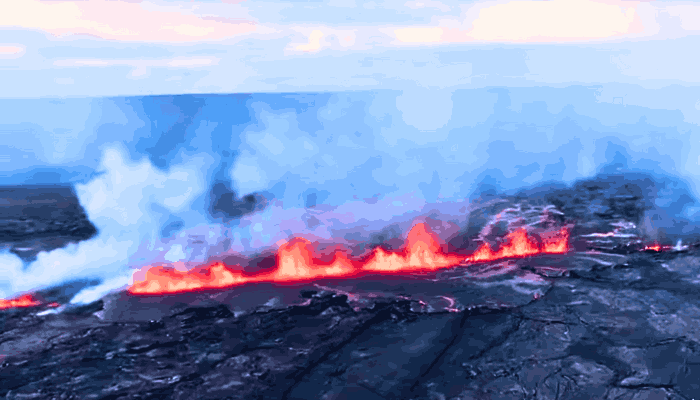THE UNIQUE ERUPTION TYPE
In 2018, the Hawaii Kīlauea Volcano eruption stunned Scientists with a series of 12 back-to-back explosions. Researchers have now identified this event as a new type of volcanic eruption, labeling it the “Stomp-Rocket Eruption”.
This discovery not only adds a new category to Volcanic eruptions but also offers insights that may improve future eruption predictions.
The Unique Dynamics of the Hawaii Kīlauea Volcano Eruption
Unlike typical volcanic eruptions driven by rising magma or vaporized groundwater, the Hawaii Kīlauea Volcano eruption involved a different mechanism altogether.
Moreover, researchers discovered that a sudden increase in pressure triggered the explosions as the ground collapsed. This collapse forced rock fragments and hot gas to erupt, similar to a Stomp-Rocket toy.
Furthermore, the “Stomp” in this scenario was a kilometer-thick chunk of rock dropping down, creating pressure, and launching volcanic material into the air.
Understanding the Stomp-Rocket Mechanism
During the Hawaii Kīlauea Volcano eruption, magma was slowly draining from an underground reservoir.
This magma fed lava flows miles away, depleting the reservoir and causing the ground above it to collapse. This collapse increased pressure in the reservoir, which then forced a pocket of magmatic gas and debris through a vent, resulting in explosive eruptions.
No one has previously observed this Stomp-Rocket mechanism in such detail, making it unique.
Significance of the Hawaii Kīlauea Volcano Eruption Study
The Hawaii Kīlauea Volcano eruption provided researchers with a wealth of data due to the continuous monitoring by the U.S. Geological Survey’s Hawaiian Volcano Observatory. Consequently, this allowed Scientists to piece together the dynamics of the eruption in great detail.
Overall, the findings, published in Nature Geoscience highlight the importance of hindcasting—studying past eruptions to predict future events more accurately.
Implications for Future Volcanic Studies
The discovery of the Stomp-Rocket Eruption mechanism during the Hawaii Kīlauea Volcano eruption opens new avenues for volcanic research.
By combining sensor measurements with computer simulations, Scientists can better assess eruption hazards.
This understanding can lead to improved warning systems and preparedness for communities living near active Volcanoes.
Broader Impact of the Research
The insights gained from the Hawaii Kīlauea Volcano eruption are likely to influence how Scientists study other Volcanoes.
The Stomp-Rocket mechanism might be more common than previously thought, and similar eruptions could occur elsewhere. This research underscores the complexity of volcanic systems and the need for detailed monitoring and analysis.
The Hawaii Kīlauea Volcano eruption not only added a new category to volcanic eruptions but also provided valuable data that could enhance future eruption forecasts.
As Scientists continue exploring these findings, they will crucially improve Safety and Preparedness for Volcanic events worldwide.
Read Detailed Study On Stomp-Rocket Eruption : The Scientists Analysis of the Hawaii Kileauea Volcano Eruption Type
Also Read : Selective Strengths of OneDrive Cloud Over Google Drive Cloud




